Laci Mosier: There’s a Fungus Among Us
Here Laci Mosier shares glimpses of secret messages and cultural forces that waft into the very air we breathe—for more about Laci’s process, please check out our Q & A, which follows these amazing visual poems.
— Nance Van Winckel
A Glimpse into the Past
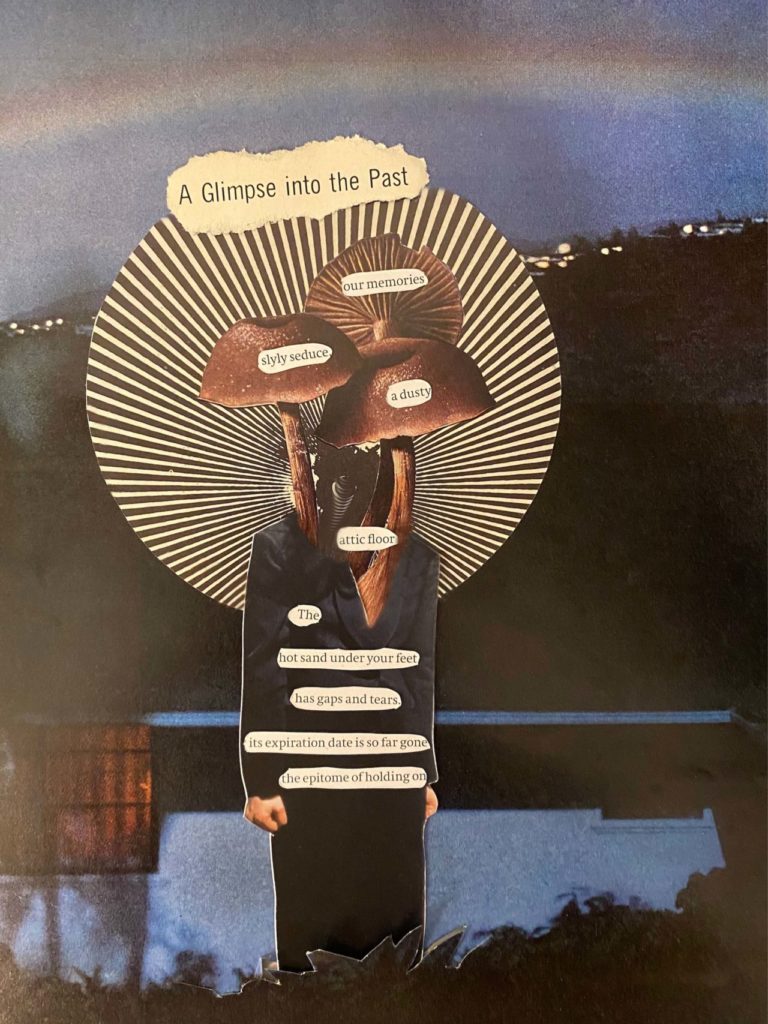
Fixing the House
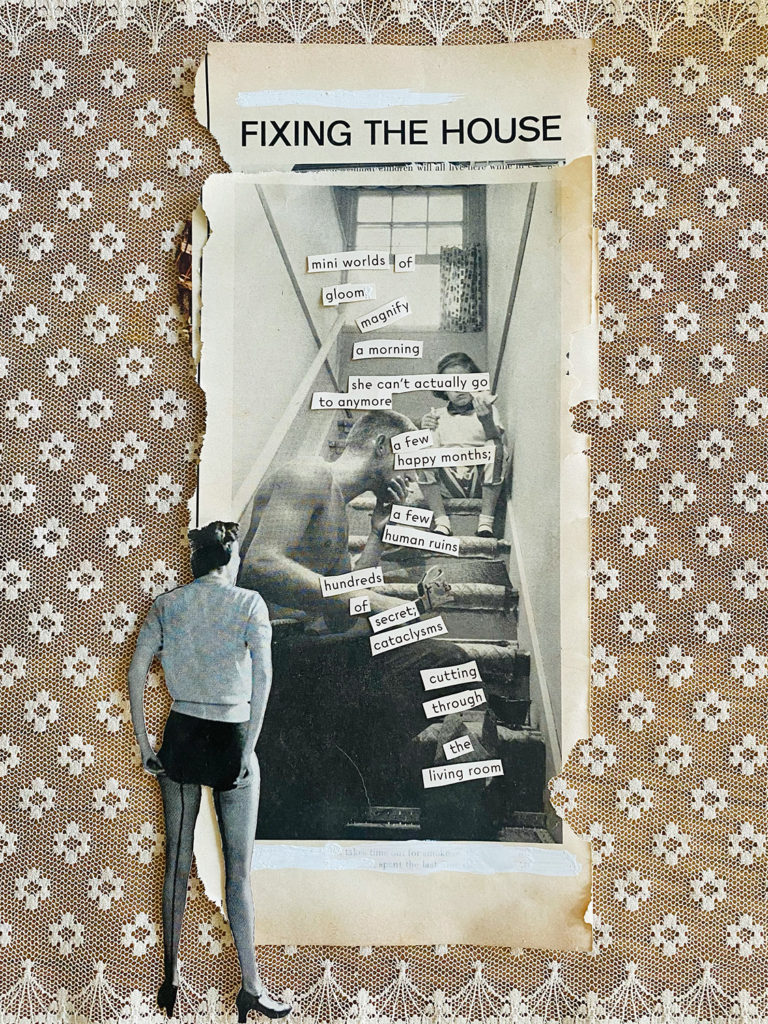
Fruit Loops
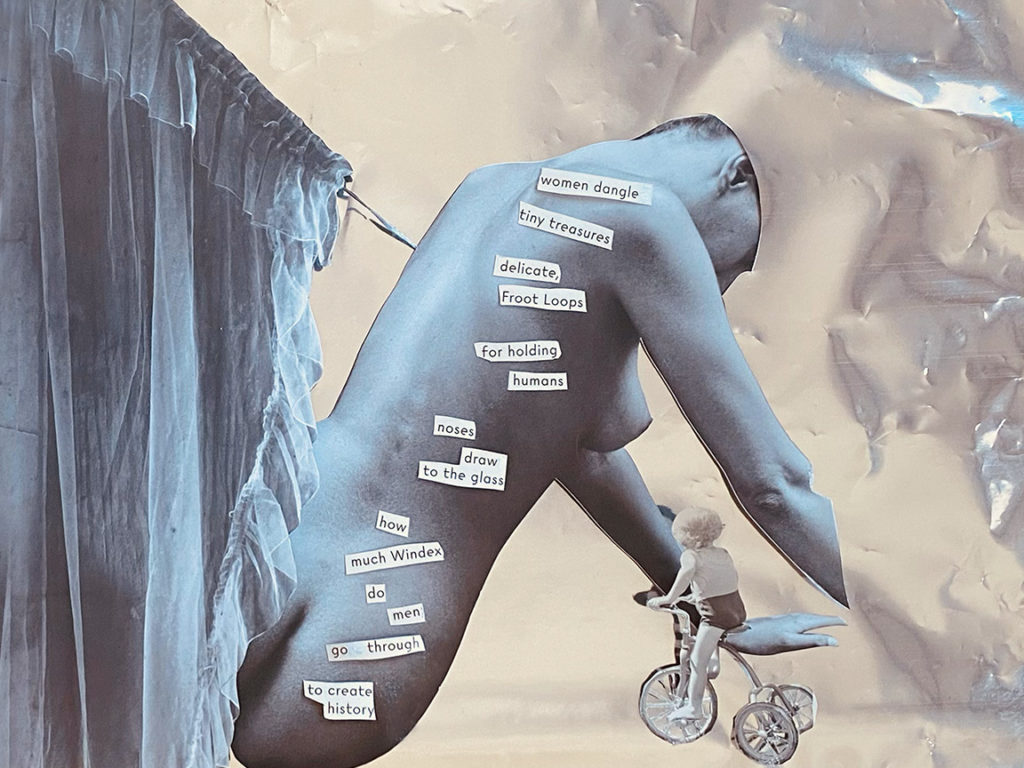
Backbones
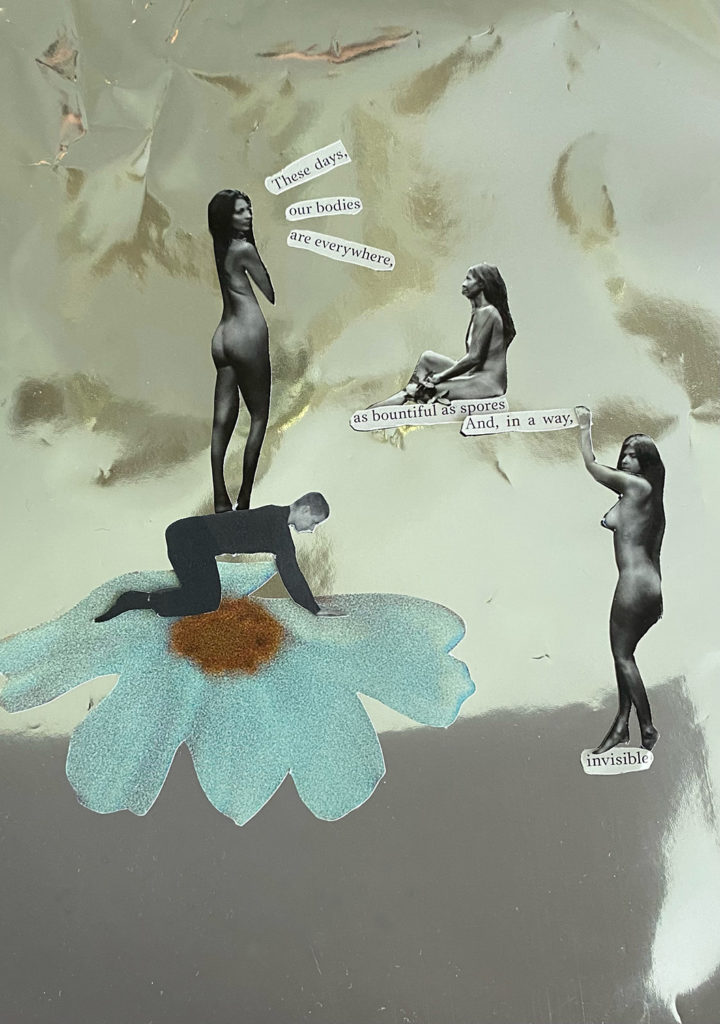
Reaching Up
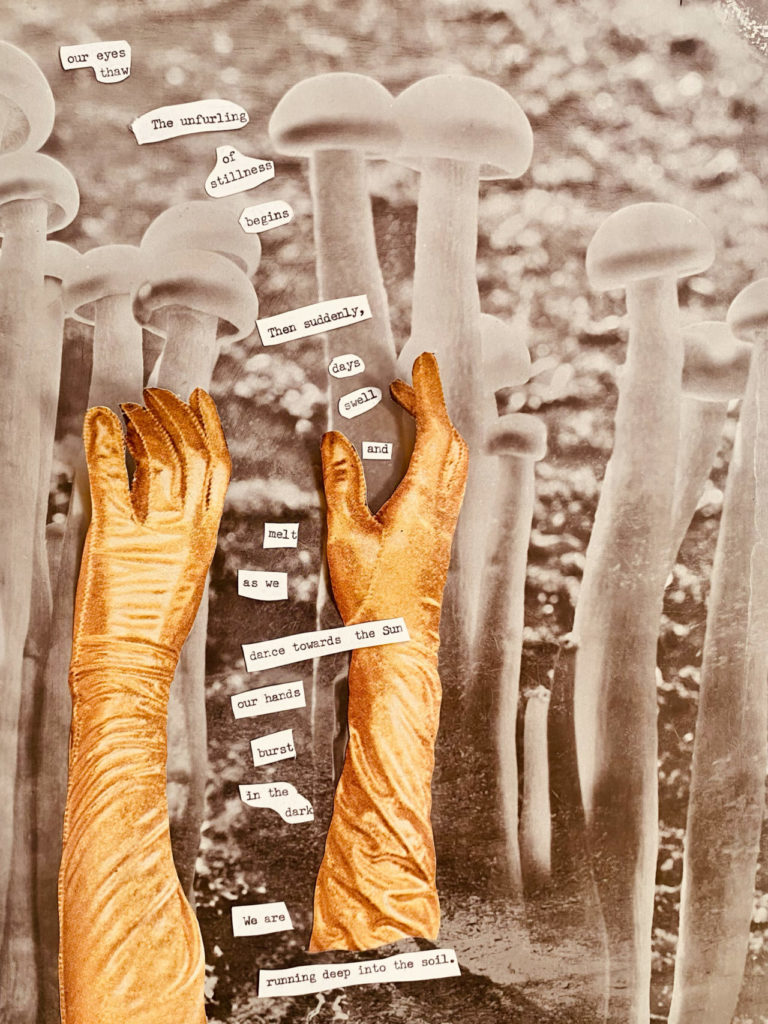
There’s a Fungus Among Us
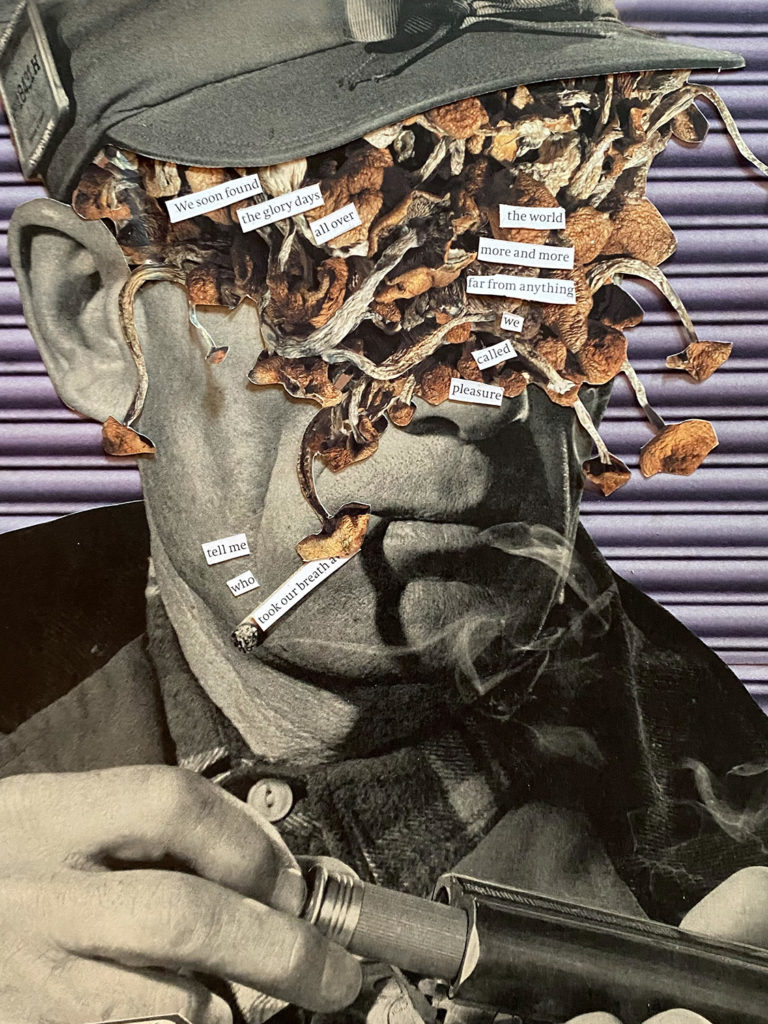
—
Nance Van Winckel: For me the fungi suggest ideas of new growth out of the old, for instance in the first piece “A Glimpse into the Past.” I love that about mushrooms—how they thrive on detritus, e.g., “a dusty attic floor.” Your thoughts?
Laci Mosier: Oh yes, thriving on decay. There’s a survivalism in that. I feel like that’s sort of the rub of life: that we grow and decay, grow and decay. That process of wandering into the shadows of ourselves and rummaging around those dusty corners of our minds and memories is an essential part of growing up and forward. But there’s always that impulse to go back and rearrange the decay into something more beautiful than it was. Or to only hold the good parts up to the light. That’s innate. And maybe sometimes, essential.
NVW: Spores—yes, the all-too visible vs. the invisible! I like the textual feel of these pieces. What invites touch, for instance with these “everywhere bodies,” really exists just in the ethersphere. A paradox.
LM: This piece in particular, “Backbones,” was made around the time Roe v. Wade was getting overturned, and I felt an urgency to express what that decision felt like to me, which was that women, like spores, are everywhere. Both are permeating forces and hook into the very air you breathe. They are also highly adaptable to their environments and can survive in pretty extreme conditions.
For women, the visibility comes via sex, mothering, an expectation to soften life’s hard edges, and at the same time, there’s the parallel expectation to stay almost invisible as we get silenced, ignored, and overlooked. Everyone wants a piece, so long as we keep quiet.
To subvert that expectation of quietness and invisibility into something potent and powerful felt satisfying!
NVW: Could you speak a little about making these visual poems? What calls you to this work? What surprises or pleasures do you find in the making?
This series was created over the course of a year, the beginnings of it occurring while I was sick with covid and began to feverishly slice these images up literally from my bed. Creating anything while you’re a little preoccupied with something else is always interesting because I feel like the subconscious starts to do a lot of the good work.
Some of these pieces are born out of an image that I built around the poem and other times the images are built specifically for a poem (mostly done via erasures of found text).
I have a cabinet stacked to the top with vintage Life and New York Post magazines. I like to start there, flipping through those old pages, and I’m usually compelled to cut the women out of their place in those olden days and put them into a more modern scene, with a modern role. A very tiny act of liberation. It all feels sort of like playing with paper dolls and so there’s something quite fun and innately playful about the process.
I’ve usually got the images cooking in one corner of the apartment and the text getting sliced and configured in another area. It’s wildly messy and infuriating to anyone who isn’t me. I like to keep the mess out for a few weeks as I work through the details of moving the elements of the images around — trying different arrangements each day, finding new weirdness and little surprises.
As far as the elements themselves, I like to experiment with pairing the old tissue-paper-thin magazine pages against the glossy textures of new materials. Through this process of layering, I usually find different shadows emerge and bring a really cool depth to the pieces that I can’t really plan. In that way, it’s as if the pieces start to have their own little life and do their own thing. I like that.
NVW: Fecundity. I sense a wondrous burrowing “deep into the soil” that parallels a burrowing into the depths of the psyche, no?
Oh yes, definitely. Mushrooms are wickedly cool. They function sort of like nature’s version of the internet. Trees and other flora are able to gather loads of information through the vast network of fungi around them.
It’s interesting to me to think about the rot of our lives—our minds—and how all that darkness is connected to the present, and if we let it, can function like a map back to where we came from and where we’re going.
—
Laci Mosier is a poet and fiction writer living in Brooklyn, NY. Her text art has appeared in Hobart, The American Journal of Poetry, Tupelo Quarterly, and others. Her work has been nominated for Best Small Fictions and named a finalist for the Tobias Wolff Award for Fiction. She holds an MFA in Writing from Vermont College of Fine Arts.
